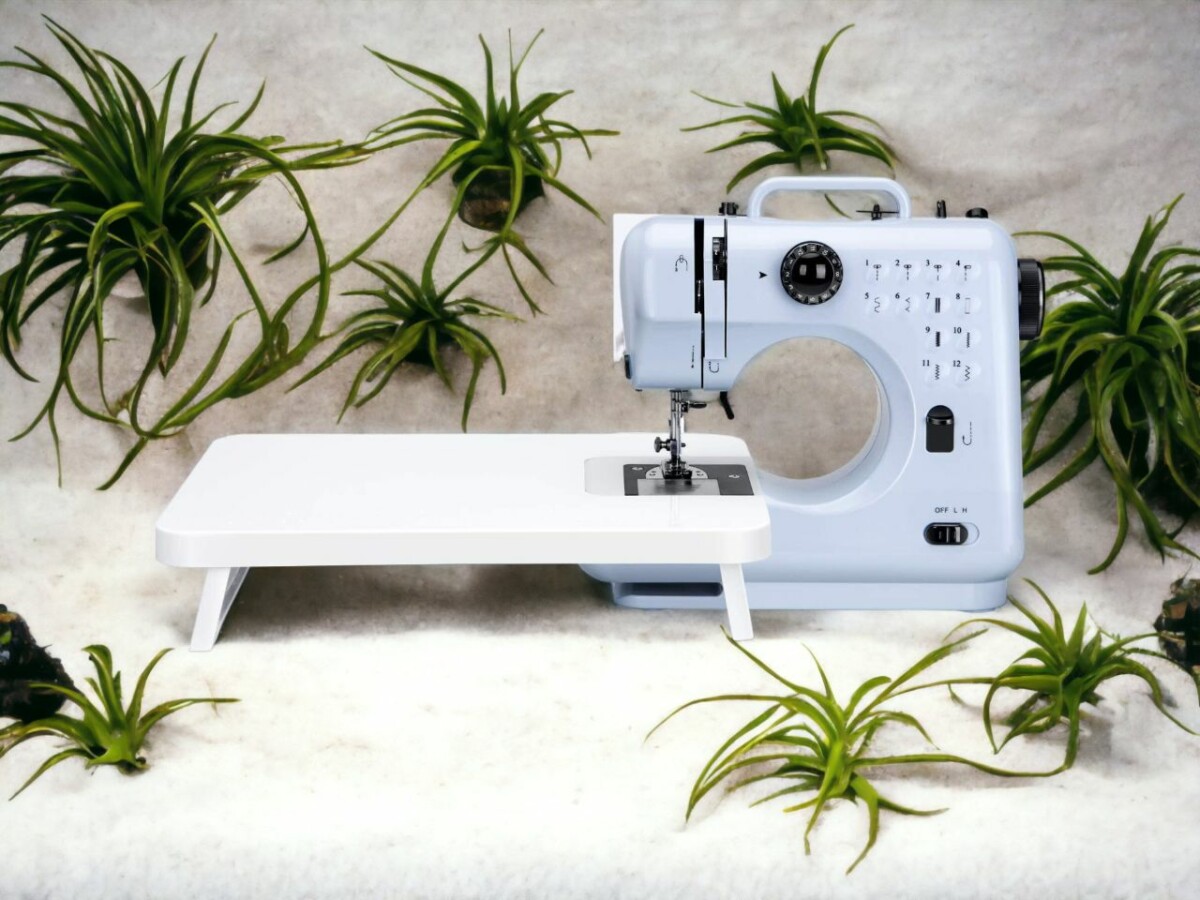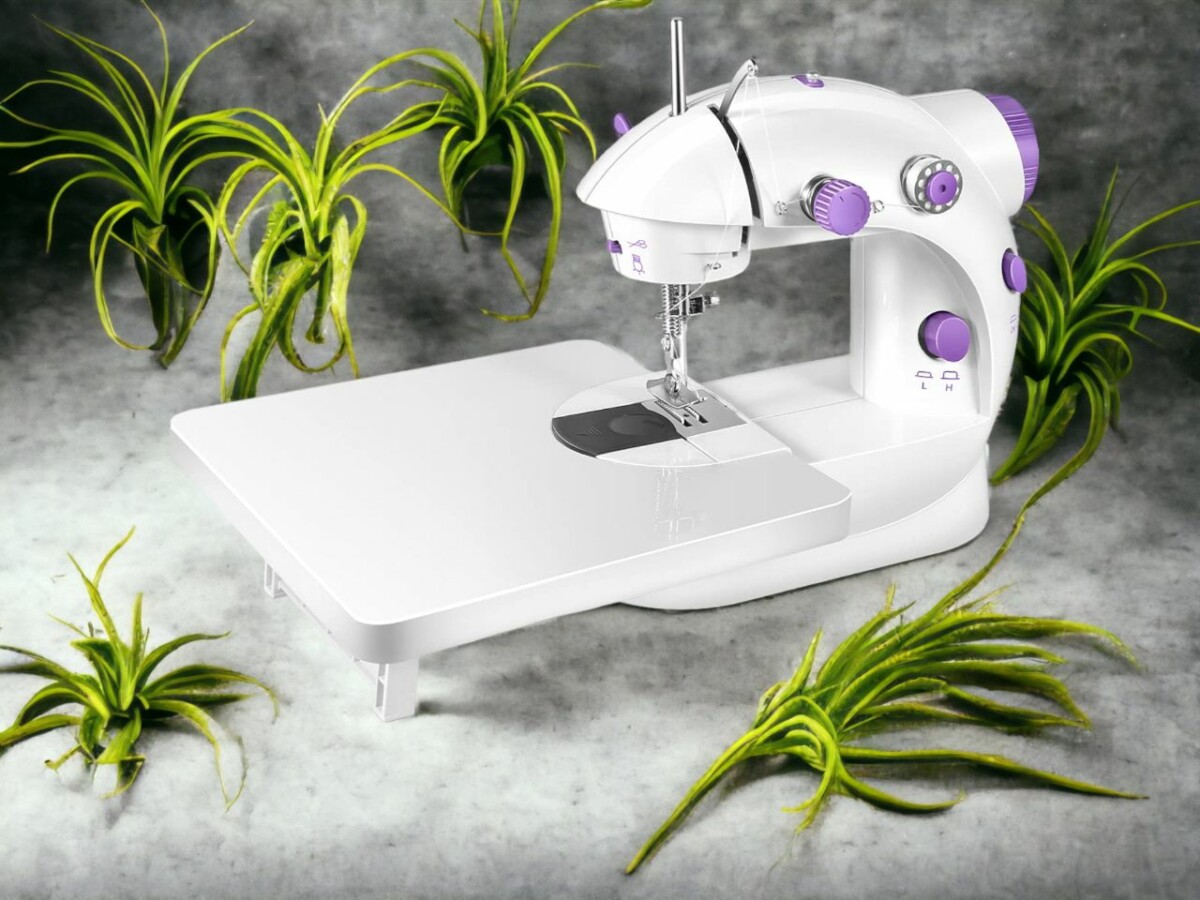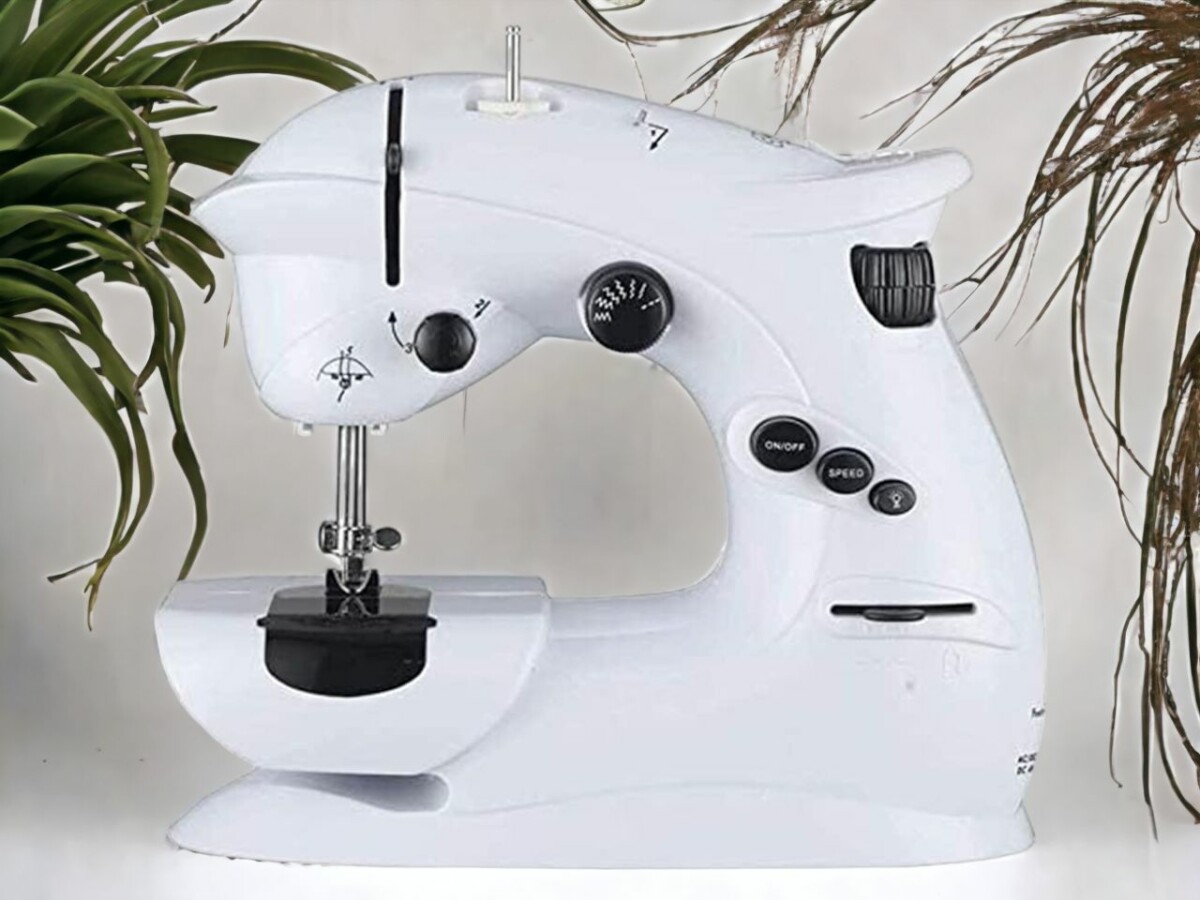So you’ve got a pair of jeans that have seen better days, and you’re all set to give them a new lease on life. But here’s the million-dollar question – can your everyday sewing machine rise to the occasion? It’s not as straightforward as a simple ‘yes’ or ‘no’.
The answer depends on a bunch of stuff like the type of your machine, the thread you’re using, and even the size of your needle. Have you got a hard-as-nails Denimcore thread? Is your needle a tough size 16, ready to take on the world?
With the right gear and a few tweaks, you’ll be breathing new life into those jeans before you know it. But let’s not get ahead of ourselves. Let’s dig into the details and get to grips with the ins and outs of sewing denim.
Can You Mend Jeans with a Regular Sewing Machine?
Indeed, you can stitch jeans using a regular sewing machine. But remember, you’ll need a denim or jeans needle, you’ll need to extend your stitch length for thicker seams, and a walking foot could help move the heavy fabric more easily.
Let’s talk about your sewing machine, because believe it or not, it plays a huge role in your sewing success, especially when you’re working with tough-as-nails materials like denim. You might think all machines are created equal, but that’s where you’re wrong.
Those old-school, vintage sewing machines? Yeah, they’ve got some serious grit. With their sturdy build and metal gears, they can handle chunky denim like a champ.
But it doesn’t stop there. Knowing your machine’s settings is a game-changer. Take the presser foot pressure, for instance. It’s a delicate dance. Too much pressure, and you’ll be wrestling with your fabric. Too little, and it won’t feed correctly. It’s all about finding that sweet spot.
The Role of Thread in Sewing Denim
While you’re getting the hang of your sewing machine settings, remember that the thread game is just as crucial when it comes to sewing denim. The right thread can be a total game-changer.
Denimcore thread is kind of the MVP in this arena because of its strength, durability, and its perfect match with denim fabric. It’s like it was made to breeze through those tough layers, minimizing the chances of breaking or getting tangled up. Plus, Denimcore thread gives your denim work that legit, authentic vibe.
But don’t think that’s all there’s to Denimcore thread. It’s not just about the strength. This thread is consistently thick and high-quality, which cuts down on those annoying skipped stitches, leading to a smoother, less stressful sewing experience.
Importance of Heavy-Duty Needles in Denim Sewing
You’re absolutely killing it with your thread choices, but don’t sleep on the needle – it’s a major player in the denim sewing game. Opting for heavy-duty needles when working with denim is a total game changer. Thanks to their sturdy build, they’ll power through thick denim like a champ, meaning you’ll have less needle breakage to deal with. Plus, they help you achieve super crisp stitches that seriously boost the aesthetic of your project.
There’s a bunch of different heavy-duty needle options out there for sewing denim, like Schmetz Jeans Needles and Singer Denim Needles, each with their own cool features. These bad boys are crafted from top-notch materials, so you can count on their durability and precision.
Techniques to Prevent Thread Breakage
Alright, so you’ve totally nailed handling that heavy-duty needle, right? But wait, there’s another hurdle we’ve got to clear – thread breakage. It’s another common speed bump when it comes to sewing denim. Let’s break down the usual suspects causing thread breakage and how we can outsmart them.
- Thread Quality: Listen, not all threads are created equal. Those cheap, low-quality ones are basically begging to snap. Do yourself a favor and splurge a little on a strong, high-quality thread that can go toe-to-toe with tough denim.
- Thread Tension: Cranking up the tension? That’s a one-way ticket to snap city. Keep an eye on your tension, do regular checks to make sure it’s just right, especially when you’re dealing with thick denim. It’s all about balance, my friend.
- Needle Size: Using the wrong needle size is like trying to fit a square peg into a round hole – it’s just not going to end well. Make sure your needle size and thread are in harmony with the weight of your fabric.
Industrial Vs Regular Sewing Machines for Denim
Alright, let’s break it down – we’re talking industrial versus your everyday sewing machines when it comes to working with the beast that’s denim. Industrial machines? They’re beasts in their own right, eating up heavy-duty denim sewing projects without breaking a sweat. They’re all about speed, precision, and durability. But, on the flip side, they can seriously dent your wallet and you can’t just pack them up and take them anywhere.
Now, let’s talk about the regular machines. They’re easy on the pocket, super portable and can handle a variety of projects. But when it comes to thick denim, they might throw a bit of a fit and they mightn’t last as long.
So here’s the deal – finding the perfect machine for your denim dreams is all about balancing out the good and the bad. You gotta think about your budget, how complicated your projects are, and how often you’ll be using the machine.
If you’re just playing around with lighter denim, a regular machine could do the trick. But if you’re going all in with thick denim on the regular, you might want to think about splashing out on an industrial machine. It’s all about options, so pick what feels right for you!
On Sewing Jeans and Beyond: Exploring the Capacities of Your Regular Sewing Machine
So, we’ve talked about whether or not you can sew jeans with a regular sewing machine and came to the conclusion that, yes, with some precautions and creativity, it’s definitely possible. But there are other materials out there that might seem daunting, too. Take upholstery, for example. It’s thicker, it’s a tougher beast to tame, isn’t it? Well, there’s some exciting news in that regard. Go ahead and check out this little number on how to sew upholstery with a regular sewing machine.
Now, let’s talk machinery. Heard of a serger? It’s a slick piece of technology that provides neat and durable overlocking stitches. But did you know that you can use a serger as a regular sewing machine? Yeah, it’s a game changer for sure!
Last but never least, let’s get down and dirty with some tech talk. Bobs. Ever thought about going bobbinless? It seems out there, I know. Nevertheless, it is possible to use a sewing machine without a bobbin. Intrigued? You should be!
It goes to prove that sewing isn’t just a one-stitch pony. It’s a creative journey with your sewing machine. So, with some patience and a little knowledge, we bet you’ll be surprised by the formidable capabilities of your humble sewing companion.
Sewing is definitely one of my biggest hobbies. I’ve been doing it since i was young, thanks to my mother. I specialize in sewing, and that’s what i mostly write about.







